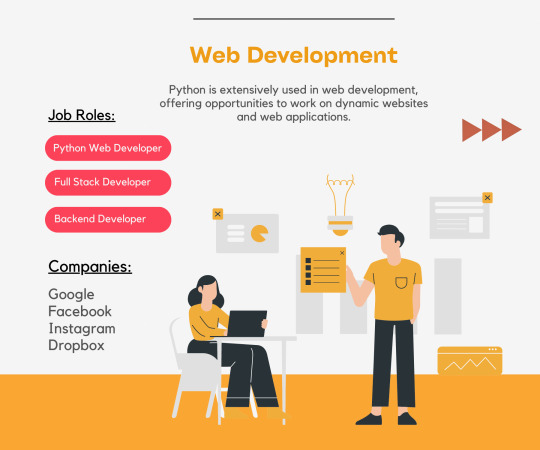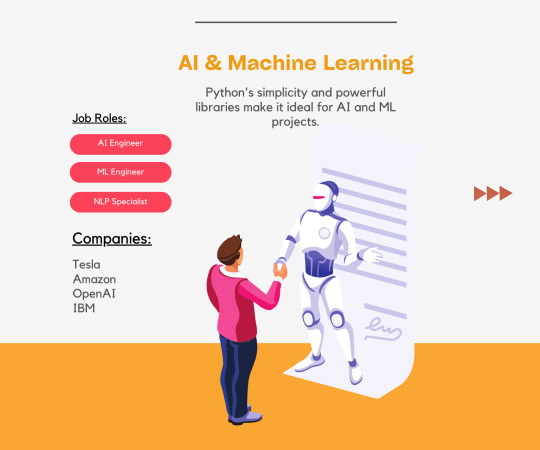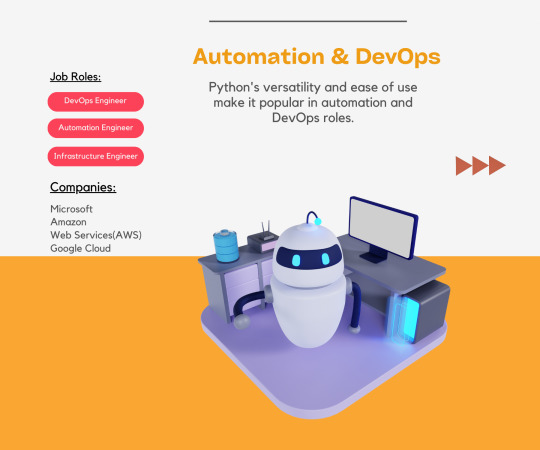Don't wanna be here? Send us removal request.
Text






Python Career Opportunities in Top Insutries
Python offers abundant career opportunities across various industries. With its versatility and extensive library ecosystem, Python is widely used in web development, data science, artificial intelligence, machine learning, automation, and more.
Job roles like Python developer, data scientist, AI engineer, and DevOps engineer are in high demand. Companies such as Google, Facebook, Netflix, Tesla, and Microsoft heavily rely on Python for their technology-driven operations.
By mastering Python course with certification, you can unlock a rewarding career path with excellent growth prospects and the potential to work on cutting-edge projects.
0 notes
Text
How to Create Realistic Animations with SketchUp: Bringing Your Designs to Life
Introduction:
In the world of architectural and product design, it’s not enough to have static 3D models. Clients and stakeholders often want to see how the final design will look and function in real life. That’s where animations come in, allowing you to bring your designs to life and showcase their potential. In this article, we will explore the process of creating realistic animations using SketchUp, a powerful 3D modeling software, and discuss techniques to make your animations truly impressive.
Understanding the Basics of SketchUp Animations:
SketchUp’s animation capabilities: SketchUp provides a range of tools and features that enable you to create animations, including scenes, keyframes, and the animation timeline.
The importance of planning: Before diving into the animation process, it’s crucial to plan your animation by defining the camera movements, object interactions, and desired visual effects.
2. Setting up Scenes and Camera Movements:
Utilizing scenes: Scenes in SketchUp allow you to save different camera views, object states, and styles. They form the building blocks for creating smooth animations.
Defining camera movements: Learn how to set up dynamic camera movements, such as panning, orbiting, zooming, and walkthroughs, to enhance the realism of your animations.
3. Adding Motion to Objects:
Utilizing keyframes: Keyframes serve as milestones in your animation timeline, allowing you to define the position, rotation, and scale of objects at specific points in time.
Animating object interactions: Explore techniques to animate objects interacting with each other, such as doors opening, components assembling, or lights turning on/off.
4. Enhancing Realism with Materials, Lighting, and Textures:
Applying materials and textures: Learn how to apply realistic materials and textures to objects, making them visually appealing and accurate representations of real-world materials.
Utilizing lighting techniques: Discover how to use SketchUp’s lighting features to create natural or artificial lighting effects, adding depth and ambiance to your animations.
5. Fine-tuning and Rendering:
Refining animation timing: Adjust the timing of your animation by editing keyframes and transitions to ensure smooth transitions between scenes and camera movements.
Rendering your animation: Explore options for rendering your animation within SketchUp or exporting it to external rendering software to achieve high-quality visual output.
6. Showcasing and Sharing Your Animations:
Exporting your animation: Learn how to export your animations in popular video formats, such as MP4 or MOV, for easy sharing and distribution.
Presenting your animations: Discover methods to present your animations effectively, whether it’s embedding them in presentations, sharing them on websites, or creating interactive experiences.
Conclusion: With SketchUp’s animation capabilities, you have the power to bring your designs to life in a realistic and engaging manner. By mastering the techniques outlined in this article, you can create captivating animations that will impress your clients, stakeholders, and colleagues. So, unleash your creativity, explore the world of animation with SketchUp, and elevate your design presentations to new heights.
0 notes
Text
Career opportunities and salary prospects for ANSYS certified professionals

If you’re considering pursuing ANSYS certification, you may be wondering what career opportunities and salary prospects are available for certified professionals. ANSYS software is used in a range of industries, including aerospace, automotive, medical, and energy. ANSYS certification can demonstrate your expertise in using this software, which can enhance your career prospects and earning potential. In this blog, we’ll explore the career opportunities and salary prospects for ANSYS certified professionals.
Career Opportunities
ANSYS certified professionals can pursue a range of career opportunities in various industries. Some of the most common job titles for ANSYS certified professionals include:
Simulation Engineer: Simulation engineers use ANSYS software to model and analyse complex engineering systems, such as aircraft engines, automotive engines, and medical devices.
Design Engineer: Design engineers use ANSYS software to develop new products and improve existing ones. They may work in industries such as aerospace, automotive, and consumer electronics.
Research Scientist: Research scientists use ANSYS software to conduct simulations and experiments to advance scientific knowledge and improve processes in industries such as energy and healthcare.
Product Manager: Product managers use ANSYS software to create and manage product designs, specifications, and documentation.
Salary Prospects
The salary prospects for ANSYS certified professionals can vary depending on factors such as industry, job title, and location. According to Payscale, the average salary for a simulation engineer who uses ANSYS is $84,000 per year, while the average salary for a design engineer who uses ANSYS is $77,000 per year. The average salary for a research scientist who uses ANSYS is $92,000 per year.
As with any career, the salary prospects for ANSYS certified professionals can increase with experience and education. Advanced certifications, such as the ANSYS Certified Professional (ACP) certification, can demonstrate even greater expertise in using this software and can lead to higher salary prospects.
Conclusion
ANSYS certification course can open up a range of career opportunities in various industries, and the salary prospects for certified professionals can be competitive. By developing a deep understanding of this software and demonstrating your expertise through certification, you can enhance your career prospects and earning potential in the field of engineering and product design.
1 note
·
View note
Text
How to Become an AutoCAD Expert in Mechanical Engineering
AutoCAD is one of the most widely used software tools in the field of mechanical engineering. It is a computer-aided design (CAD) software that enables engineers to create, edit, and analyze mechanical designs. If you are interested in becoming an AutoCAD expert in mechanical engineering, there are several steps you can take to improve your skills and knowledge. In this blog post, we will discuss some of the key steps you can take to become an AutoCAD expert.
Step 1: Learn the Basics
Before you can become an AutoCAD expert, you need to start with the basics. This means understanding the basic commands and functions of the software. You should also learn how to create and edit basic 2D and 3D designs. There are many online tutorials and courses available that can help you learn these basics.
Step 2: Practice, Practice, Practice
Once you have a basic understanding of AutoCAD, the next step is to practice using the software. The more you use AutoCAD, the more comfortable and proficient you will become. Practice creating different types of designs, experimenting with different commands and functions, and exploring the various features of the software.
Step 3: Take Advanced Courses
To become an AutoCAD expert, you need to go beyond the basics. There are many certification courses for mechanical engineers and tutorials available that can help you learn advanced commands, functions, and techniques. These courses will help you develop a deeper understanding of the software and how it can be used to create complex mechanical designs.
Step 4: Stay Up-to-Date
AutoCAD is constantly evolving, with new features and updates being released on a regular basis. To stay at the forefront of the industry, it is important to stay up-to-date with the latest developments in AutoCAD. This means regularly reading industry publications, attending conferences, and participating in online forums and discussions.
Step 5: Gain Real-World Experience
Finally, to become an AutoCAD expert, you need to gain real-world experience. This means working on real projects and collaborating with other professionals in the field. By working on real-world projects, you will gain valuable experience and develop a deeper understanding of how AutoCAD is used in mechanical engineering.
In conclusion, becoming an AutoCAD expert in mechanical engineering requires dedication, hard work, and a commitment to learning. By following these steps, you can improve your skills and knowledge, and become a sought-after professional in the field of mechanical engineering.
4 notes
·
View notes